Retail Holiday Newsletter

Executive Summary
- While retailers’ sales grew only 1.9% in November, several indicators, such as higher online traffic and conversion rates, point to robust growth in December.
- To encourage traffic and sales online and in store, we believe that retailers will increase spending on marketing this holiday season. They will dedicate 43% of their budgets to digital channels, including social media and paid search.
- While it trails digital, TV advertising remains a significant source of fourth-quarter spending. With Mensio by Bain Media Lab, we analyzed this season’s holiday ads and found that large retailers increased impressions over last year.
- This holiday and beyond, retailers that make marketing measurement the center of their growth strategy can gain a significant competitive advantage.
Holiday sales are humming along
With Christmas less than a week away, retailers are getting ready to close the books on a solid holiday season. Several factors at play could affect the final results.
November sales grew, and signs point to a healthy December. According to the US Census Bureau’s advance sales estimates in Bain-defined retail categories, November in-store sales grew by 0.6% and nonstore sales rose by 7.2% over last year. The blended average of these growth rates, 1.9%, is currently below the 3.8% growth we forecasted this holiday season. However, the November estimates suffered from a late Thanksgiving, pushing Cyber Monday—and more than $9 billion in sales—into December.
To achieve our forecast of 3.8% growth for the season, December retail sales must increase 5.5% year over year and 14.6% over last month. While this growth isn’t guaranteed, the boost from Cyber Monday provided a strong head start. And December sales have grown more than 14.6% over November every year since 2001, outside of last year’s anomalous holiday season.
It helps that current macroeconomic indicators look promising. The US added 266,000 jobs in November, surpassing expectations and keeping the unemployment rate at a 50-year low of 3.5%. Wages are up 3.1% year over year, and consumers are increasingly confident. At the same time, the Dow Jones Industrial Average reached an all-time peak on December 19, bolstered by an initial trade deal with China.
In-store traffic may be declining. Store traffic is notoriously difficult to measure and numbers tend to vary widely, though recent estimates suggest that foot traffic hasn’t kept pace with last year. ShopperTrak and RetailNext use different sources and methodologies, yet both conclude shoppers made fewer trips during the critical Thanksgiving weekend.
Store traffic also has risen less this holiday season overall. Working with PlaceIQ, we calculated the increase in November in-store traffic over the prior three months for 10 major retailers. While each retailer saw a lift during November—ranging from 1% in home improvement stores to 25% to 40% for department stores—this year’s uptick was below the traffic boost in November 2018 (see Figure 1).
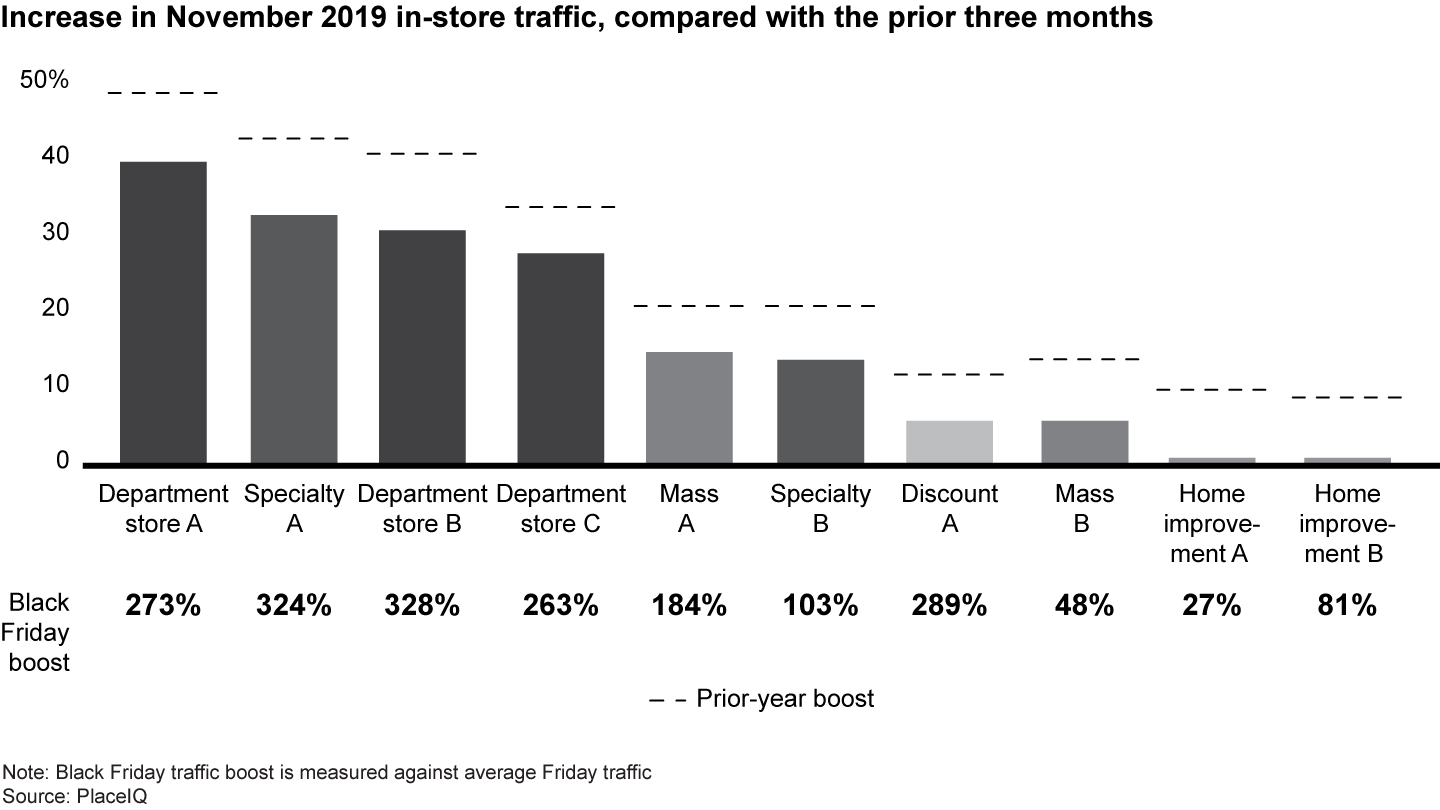
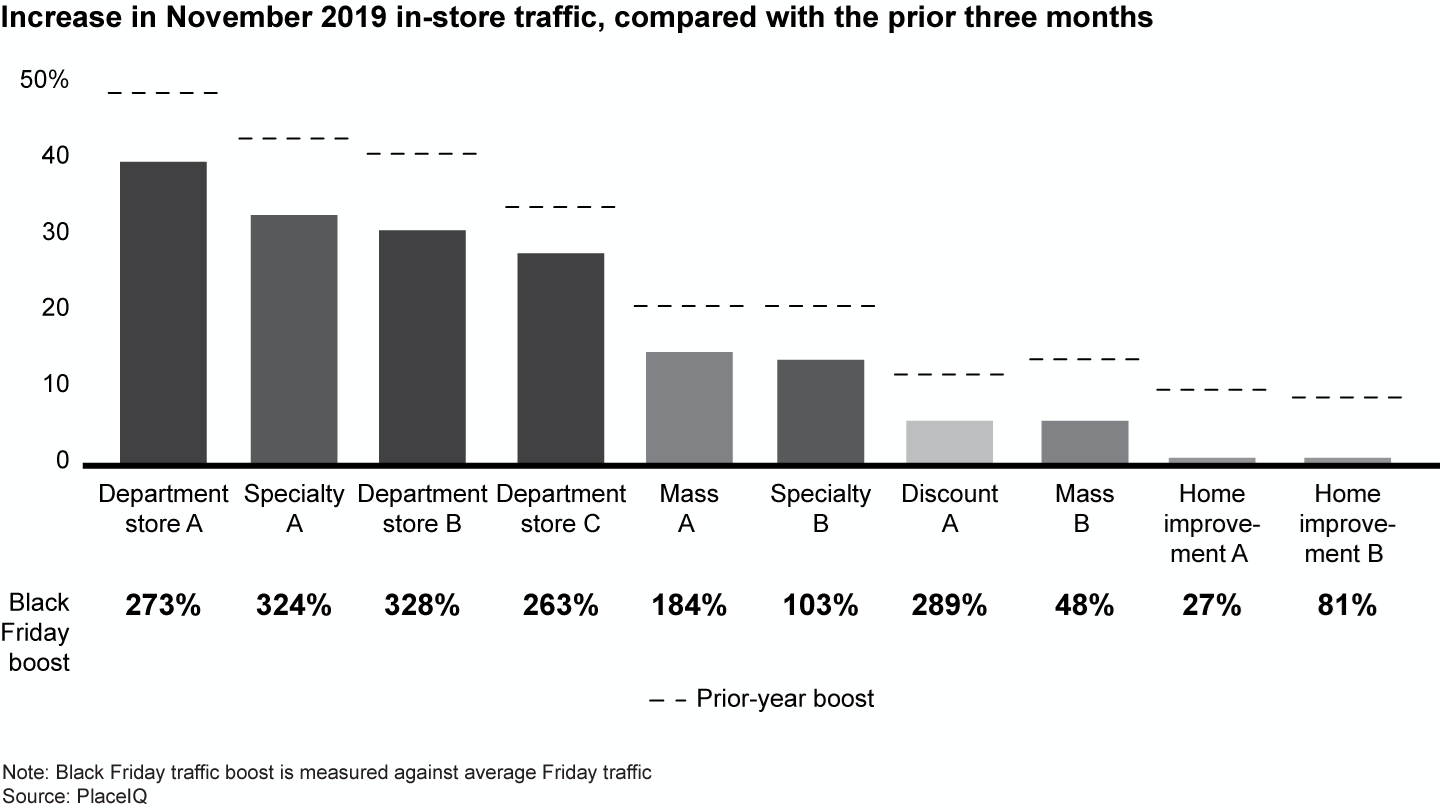
Online shopping’s trifecta: more people, bigger baskets and higher conversion. According to estimates from the National Retail Federation, 142.2 million Americans shopped online from Thanksgiving to Cyber Monday, up 8% from 131.1 million in 2018. Not only are more shoppers going online, they’re purchasing more. In partnership with Jumpshot, we studied the average basket size for transactions at the top 30 online US retailers from November 1 to December 10. On average, customers’ holiday purchases are 2.3% larger than last year. Over the same period, the conversion rate—the percentage of unique visitors to a retailer’s website who complete a purchase—is up 0.8 points, to 7%. As a result, Adobe Analytics estimates that US shoppers have spent $115.5 billion online from November 1 to December 15, in line with its prediction for a banner year.
The magic of holiday marketing
With nearly $700 billion of sales up for grabs in the US this holiday season, retail marketers are spending big to draw customers to their brands, stores and sites. According to Kantar, the all-important fourth quarter has historically represented nearly one-third of retailers’ total annual media spending, and 2019 is expected to be no different. This fourth quarter, Bain estimates retailers will increase their expenditures 3% from last year, to nearly $6.2 billion (see Figure 2).
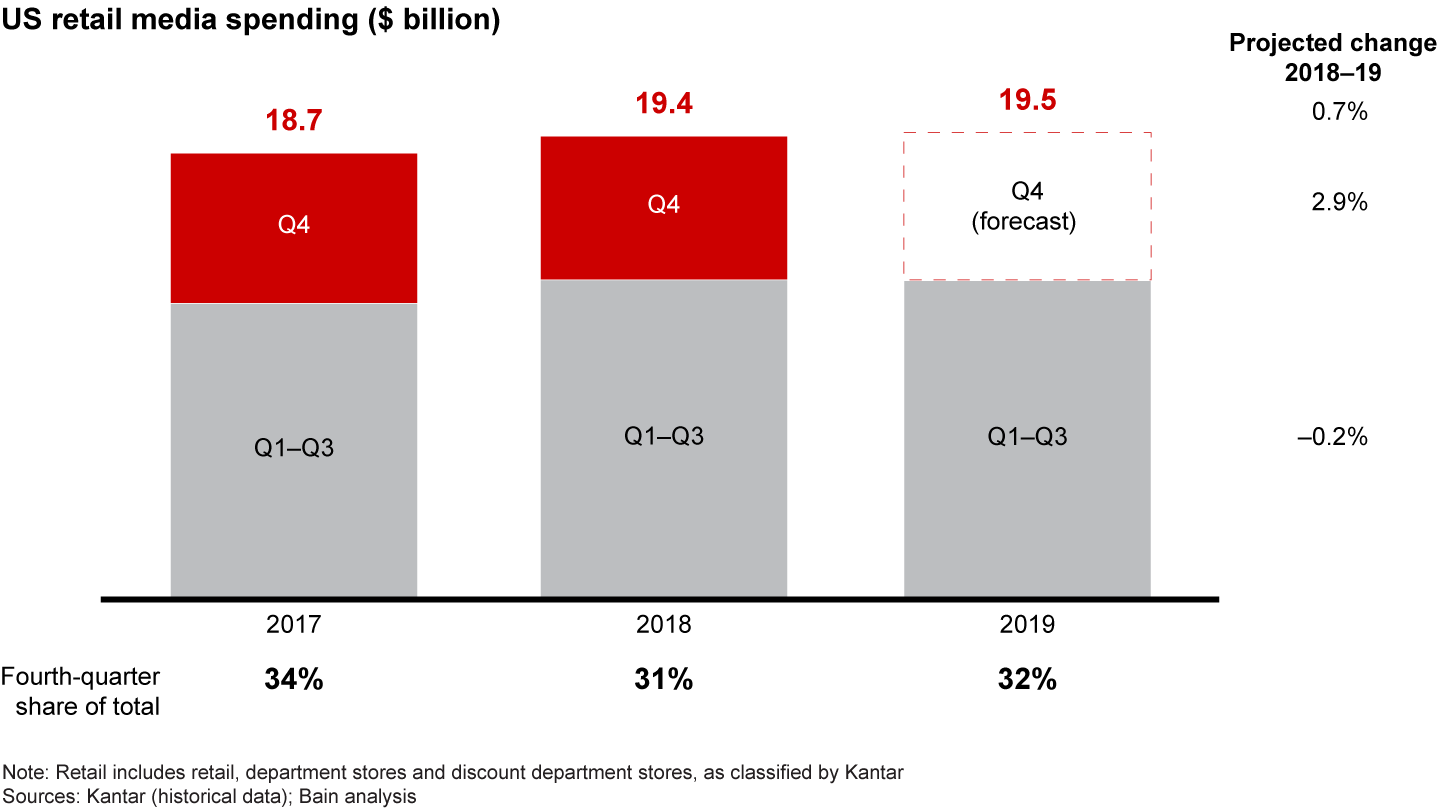
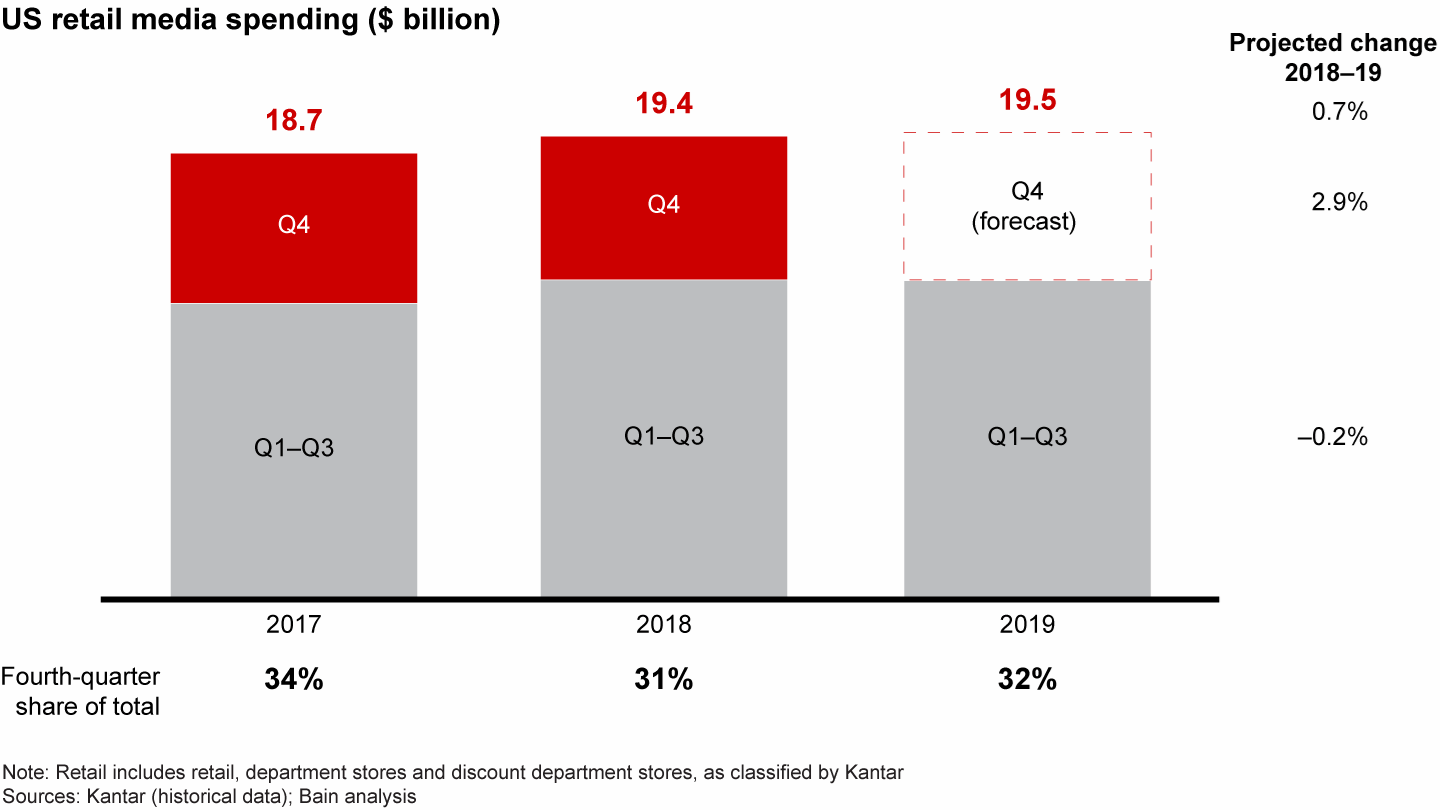
Armed with larger budgets, most retailers are investing heavily in digital media, TV and experiential marketing. We forecast retailers will spend 43% of their total fourth-quarter media budgets on digital channels, surpassing television for only the second time ever (see Figure 3). However, TV remains prominent, especially during the holidays: It accounts for 34% of retailers’ media budgets during the first three quarters and spikes to 40% at the end of the year. Beyond traditional media, 56% of retailers surveyed are also focused on creating interactive experiences, such as pop-up shops and tech-enabled events, to draw shoppers into stores and online this holiday season, according to a recent Adobe Analytics survey.

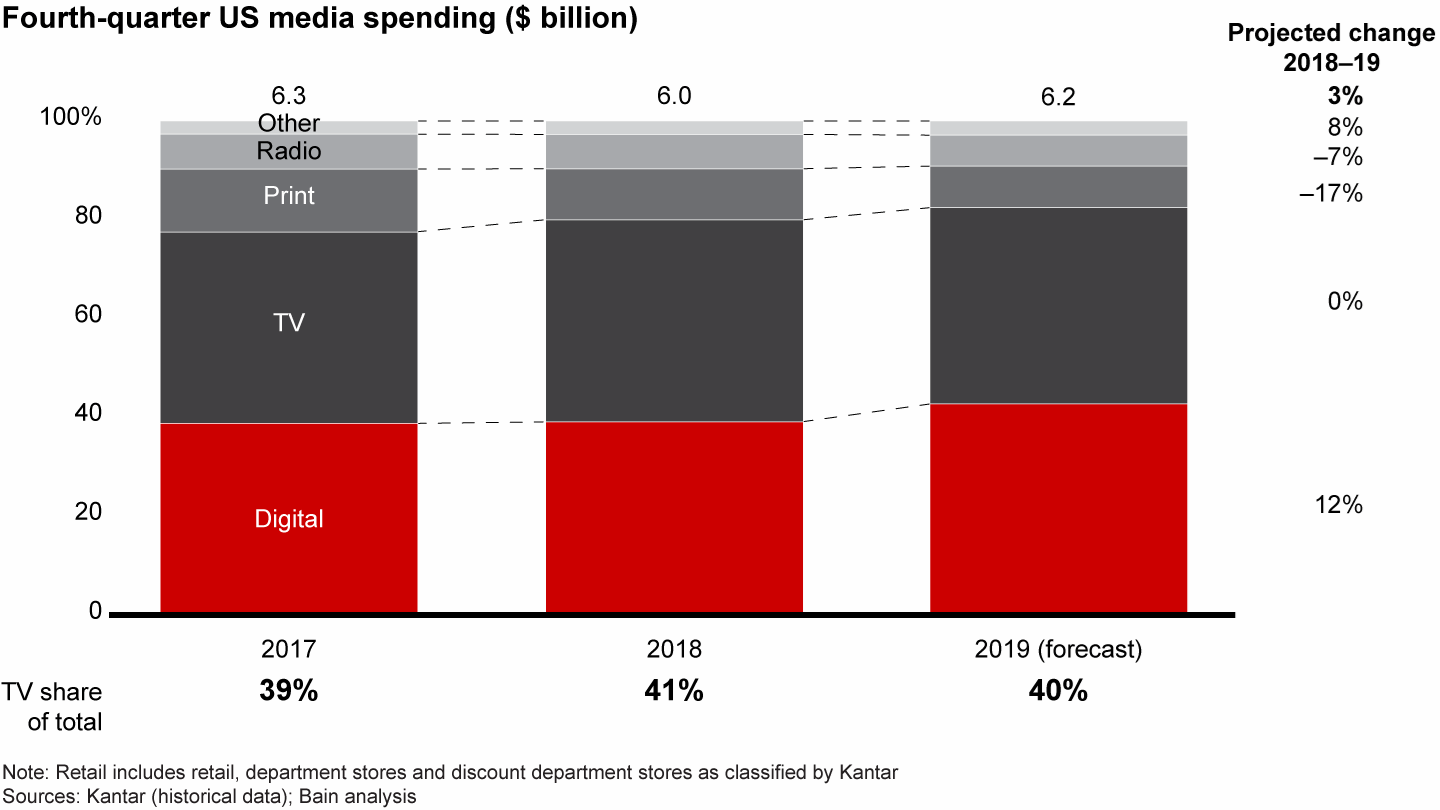
Breaking down the digital dollars
Digital media encompasses an extensive array of ever-evolving channels—ranging from paid (such as display ads) to owned (such as email marketing) to earned (such as organic search)—each with its own target customers and expected conversion rate. Within paid media, which generally has the most expensive channels, retailers are dedicating the bulk of their spending to social media and paid search, according to research we did with Pathmatics and SEMrush (see Figure 4). Yet even within categories, these allocations vary significantly by retailer. For example, some department stores put their money on social, while others invest heavily in paid search.
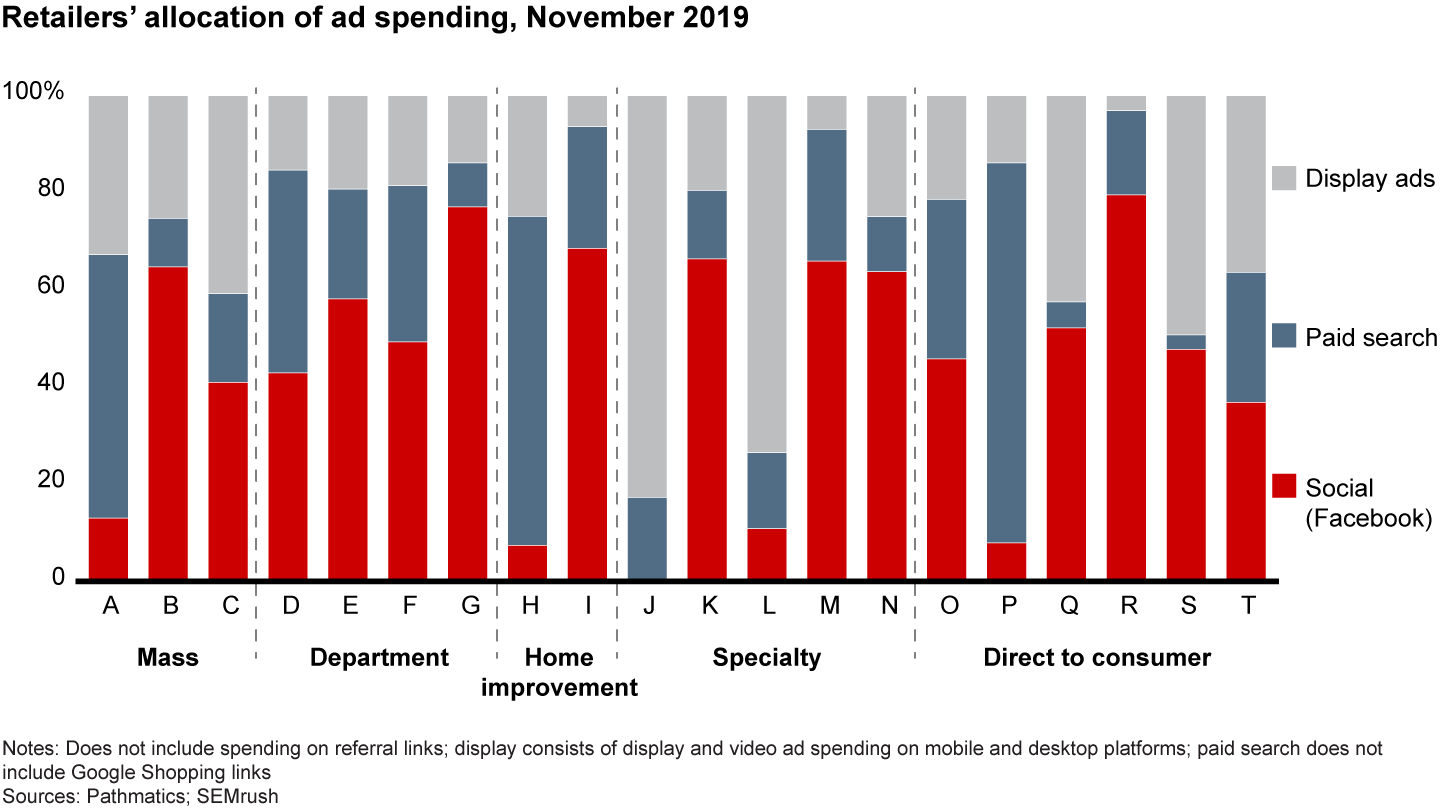
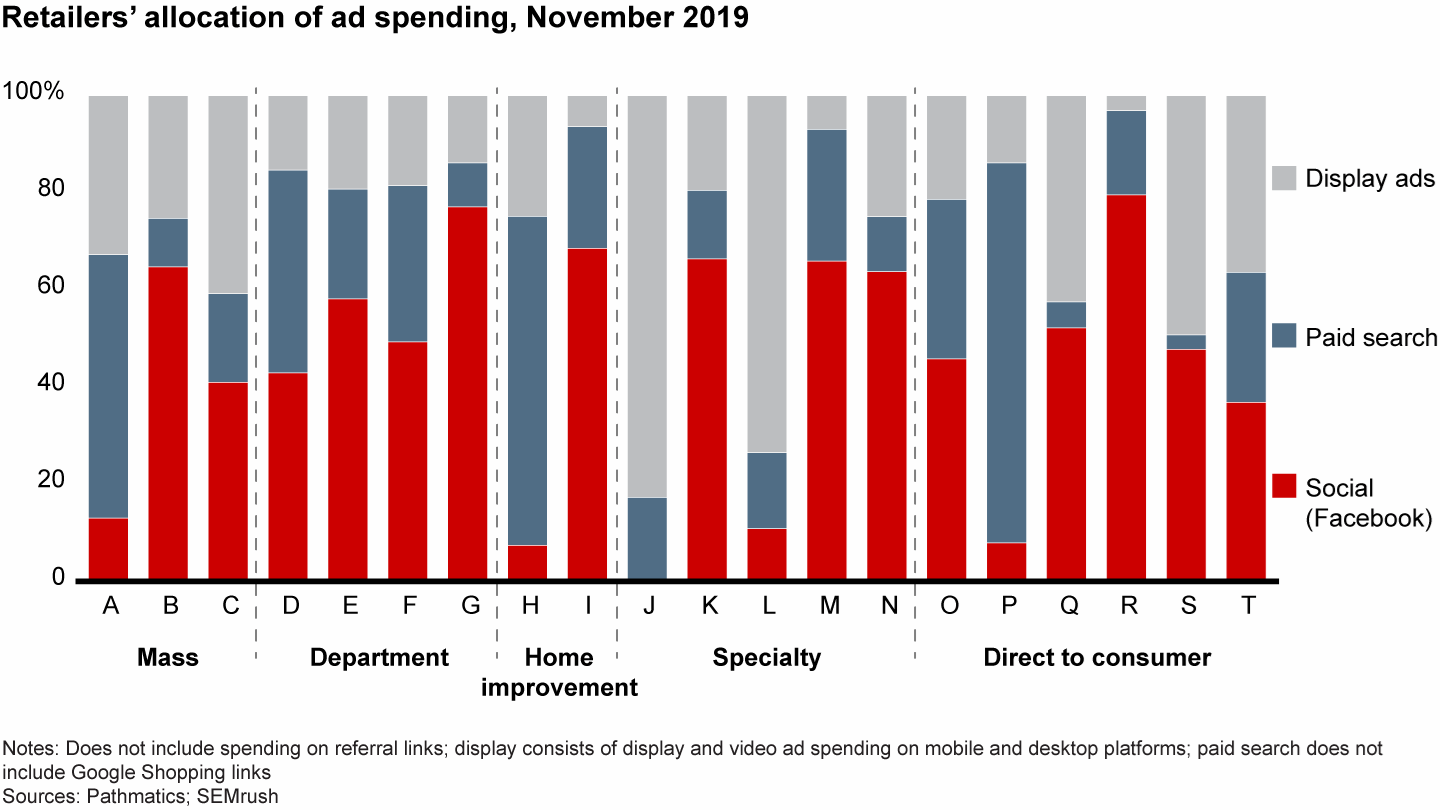
Beyond paid media, retailers are also investing in owned and earned media to spur website visits. We partnered with SimilarWeb to analyze the source of 20 retailers’ traffic across digital channels. Direct, paid search and organic search channels supplied 70% to 90% of desktop web traffic this holiday season (see Figure 5). The full story, however, is more nuanced. Consider a social media ad on Facebook or a display ad on YouTube. A shopper may see the ad, yet not click the link to the retailer’s website. But a few days later, the shopper may Google the retailer or enter the URL into his or her browser, resulting in more direct or organic search traffic.

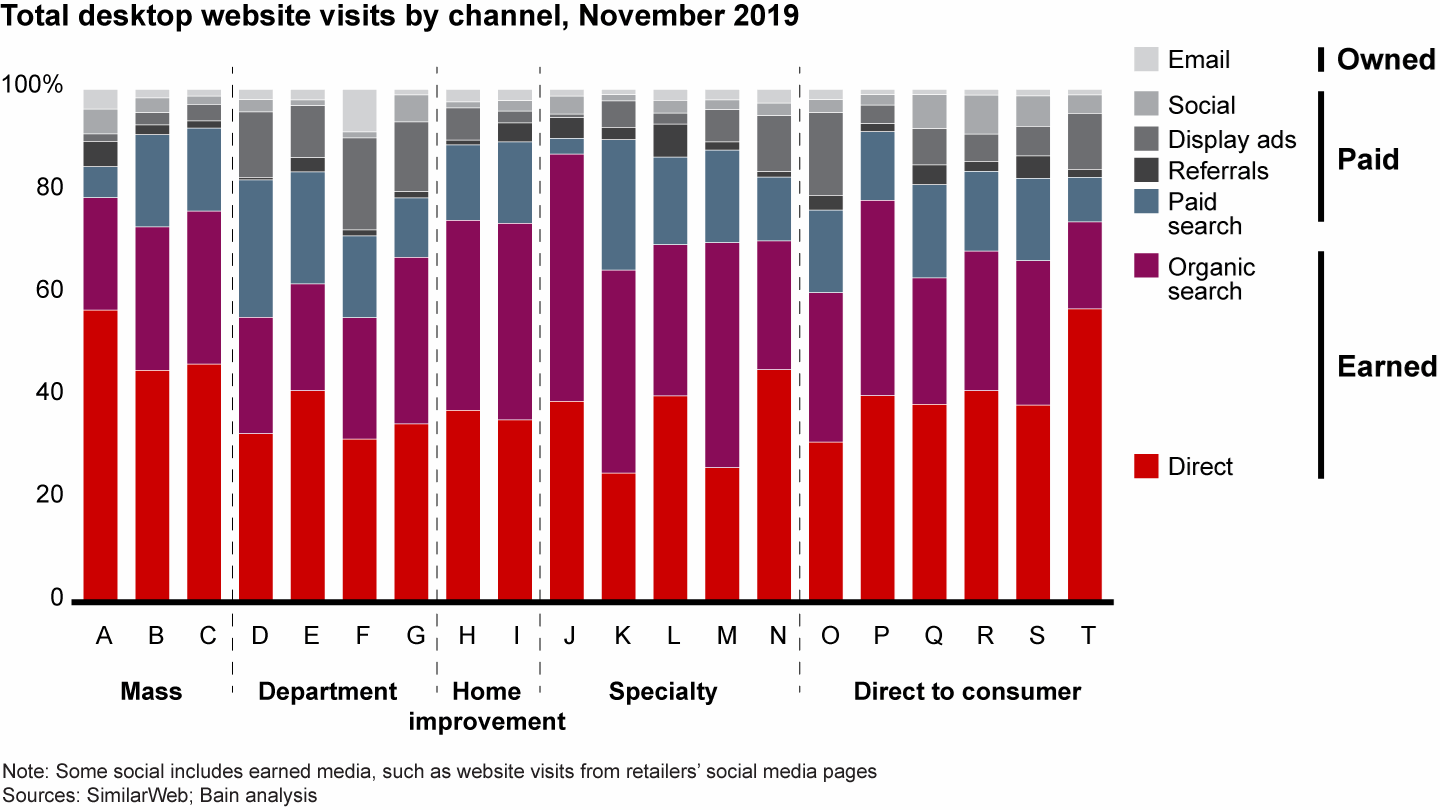
In addition to battle-tested digital channels such as Google or Facebook, retailers are experimenting with new social platforms like TikTok. Spurred by the explosive popularity of the video-sharing app among young audiences, some retailers are launching dedicated holiday campaigns on the platform. For example, beauty company EOS launched a holiday-themed TikTok campaign in the first week of December after a wildly successful September campaign on the platform, which generated more than 4 billion video views.
Tracking trends in TV ads
TV may no longer be the largest line item in retailers’ media budgets, but it’s still a significant source of spending. However, the lack of a definitive link between TV advertisements and outcomes has been one of the largest barriers to understanding the returns on these investments. With Mensio, a marketing analytics platform developed in partnership between Bain Media Lab and Hive, we took a deeper look into how major retailers are using TV advertising to generate traffic and sales this season.
Which retailers are consumers seeing on TV this holiday?
Large retailers (those with annual revenue greater than $20 billion) have garnered, on average, 3% more impressions on their holiday TV ads year over year, even as smaller retailers’ impressions declined significantly (see Figure 6). Notably, Amazon’s holiday TV ad impressions increased by more than 50% over last year, according to data from Mensio.
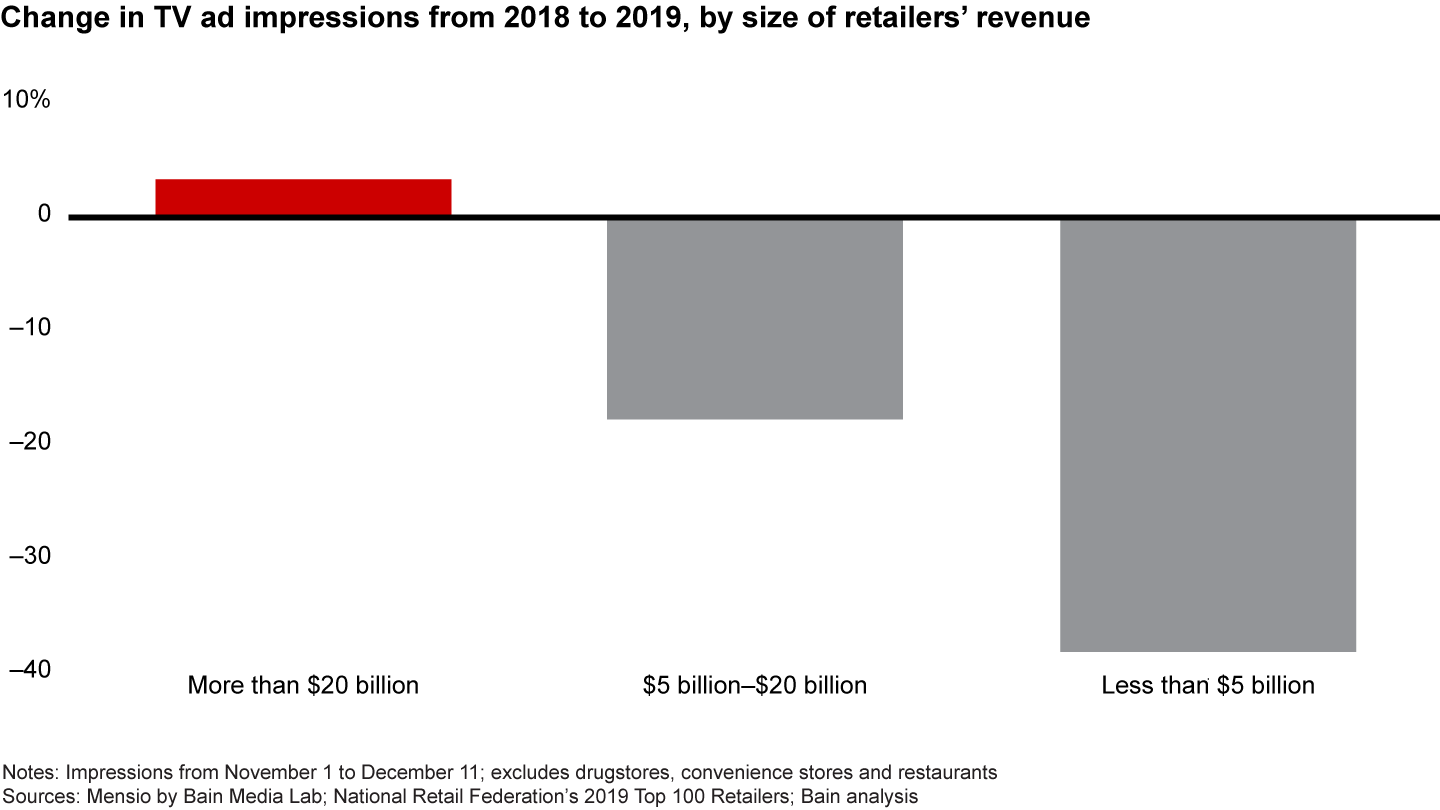
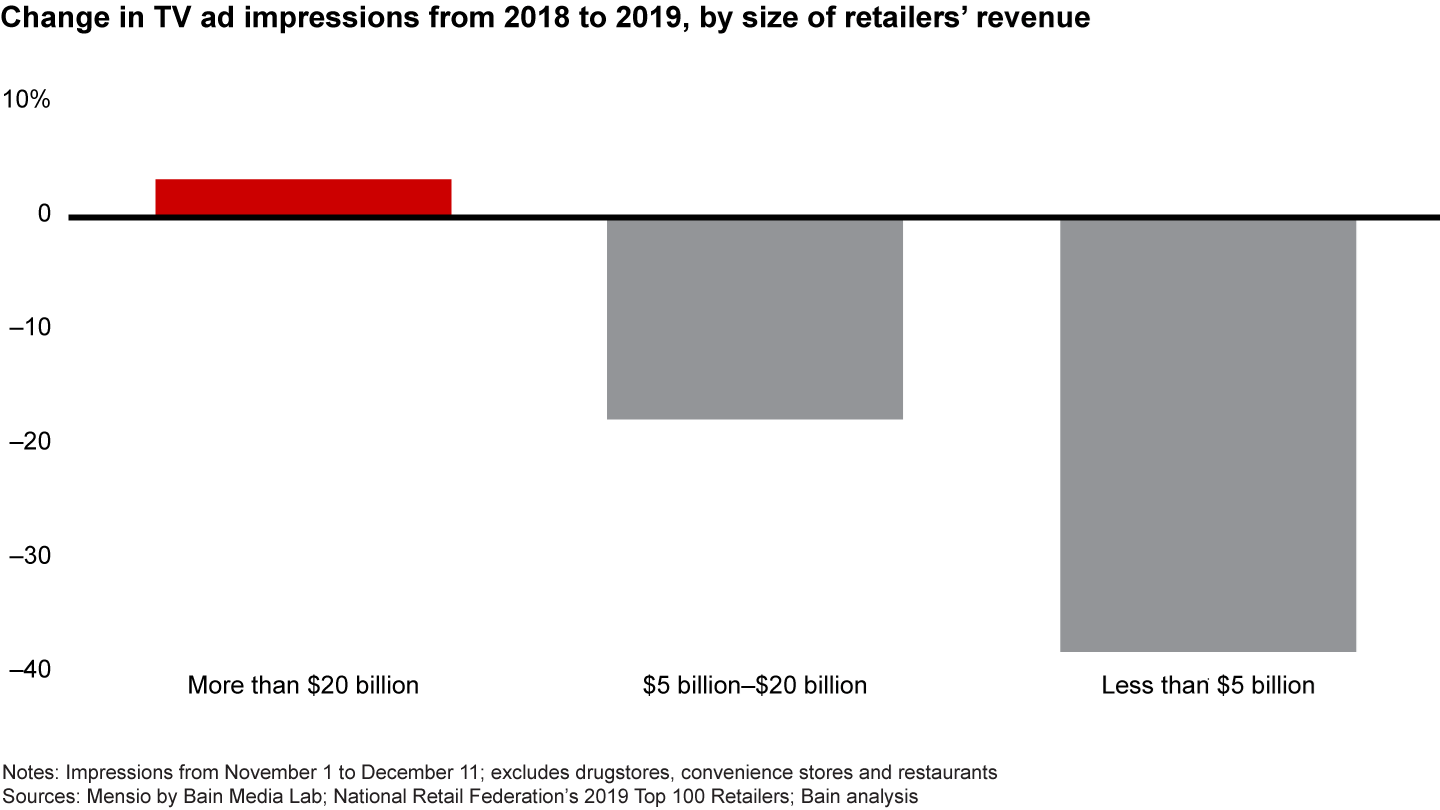
When did retailers kick off holiday ads?
This year, Black Friday fell on the latest possible date in November, shortening the critical shopping period between Thanksgiving and Christmas by six days from last year. Nevertheless, major retailers stuck to their 2018 strategies and started airing holiday TV ads—those that feature seasonal themes, promote Black Friday or advertise holiday sales—around November 1. So far this season, the cumulative impressions of their holiday TV ads are lower than in 2018 (see Figure 7).
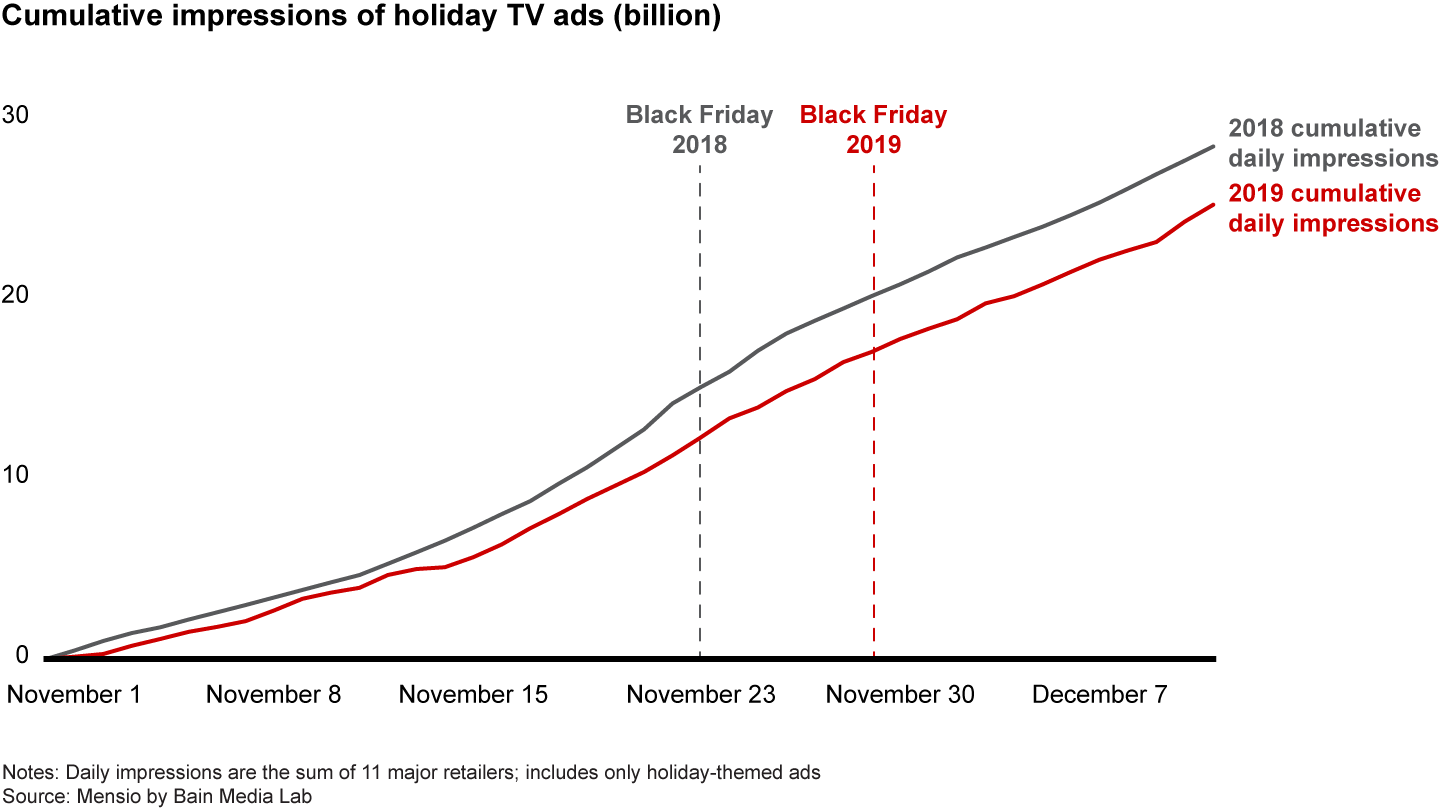
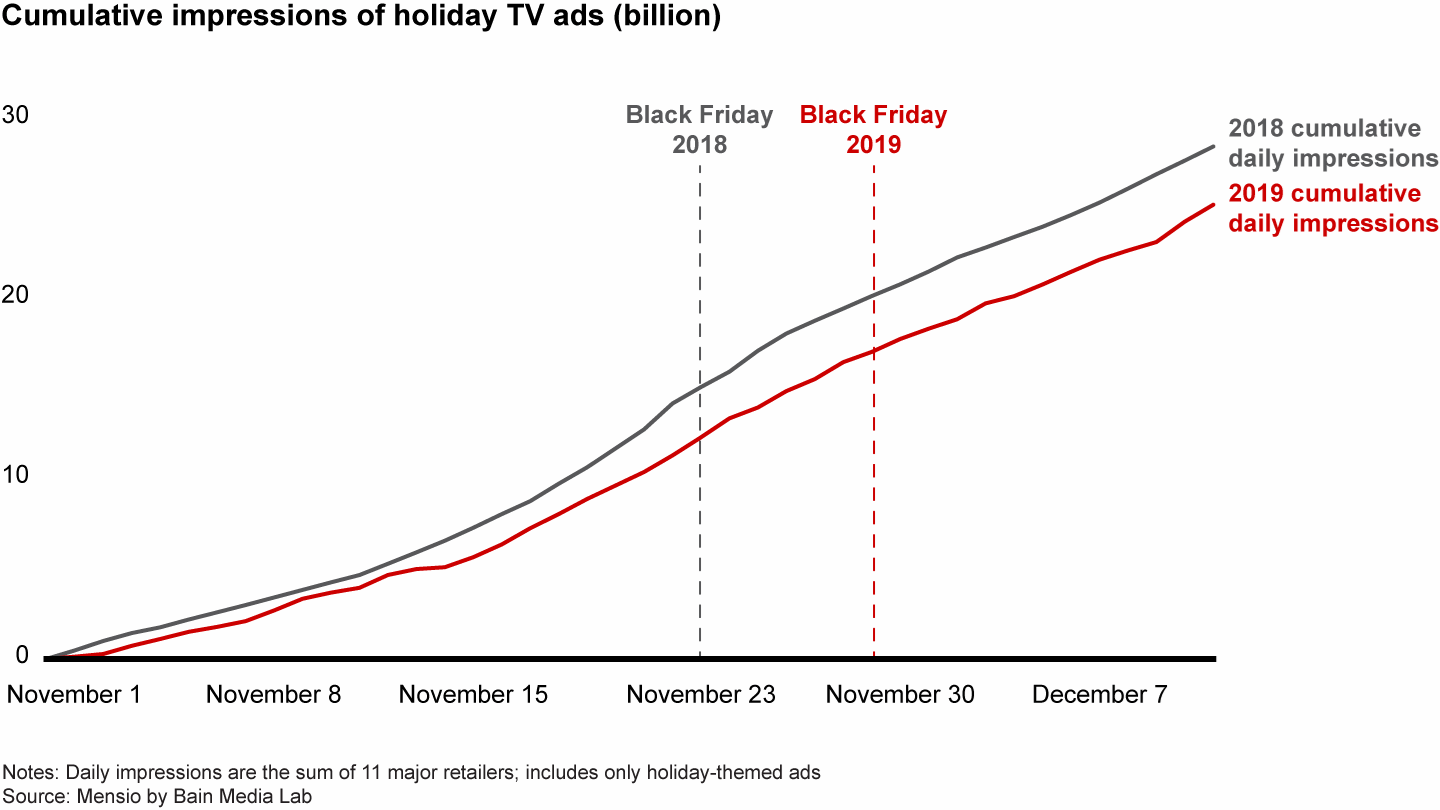
What are the big themes of this year’s holiday TV ads?
Compared with last year, major retailers are increasingly using holiday TV ads to showcase their products or assortment (see Figure 8). Ads about digital or fulfillment capabilities also increased slightly this season, supporting the growing importance of omnichannel offerings. This year, retailers are also shifting their messaging as the season progresses, by showing more storewide promotion ads and fewer feel-good holiday ads compared with the first three weeks of the holiday period.
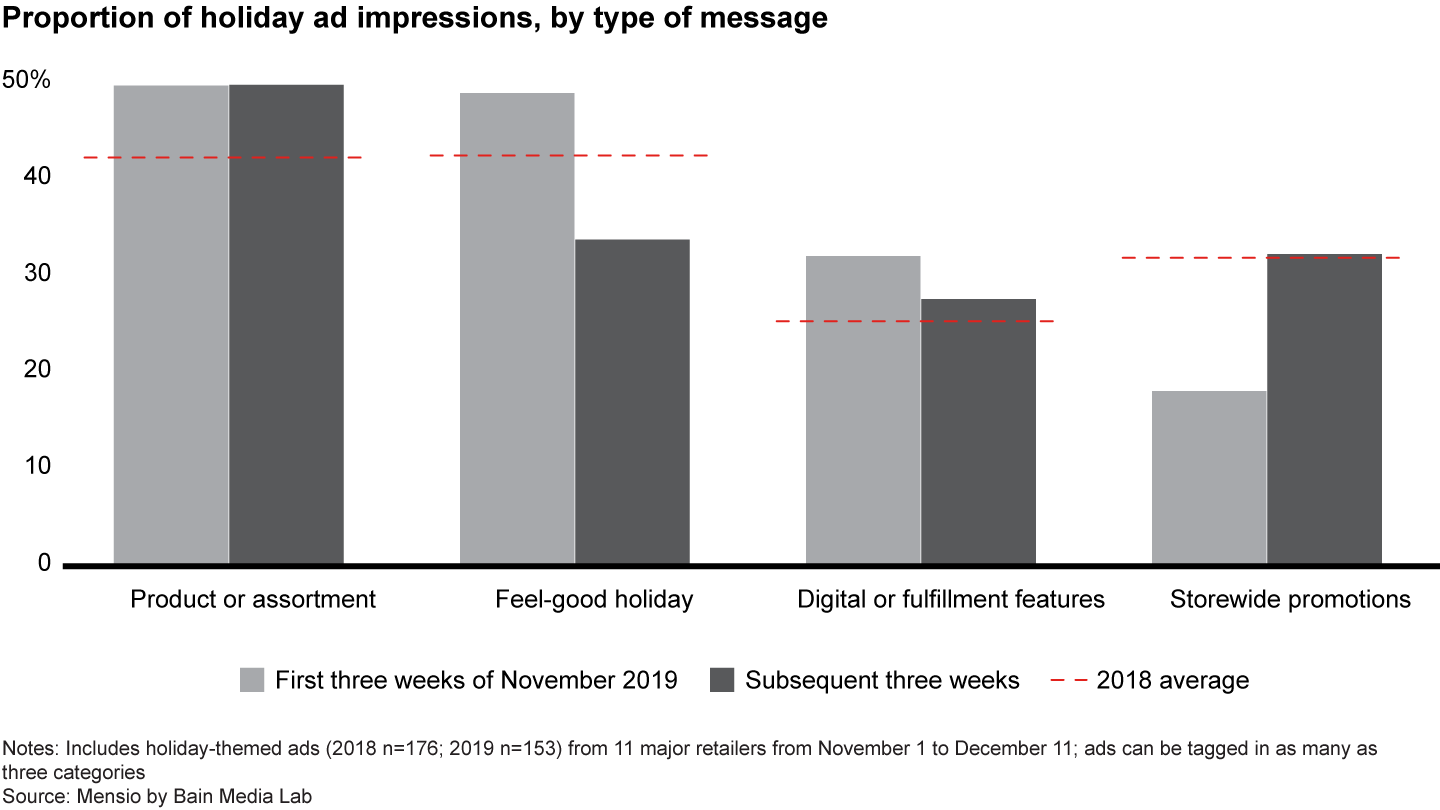
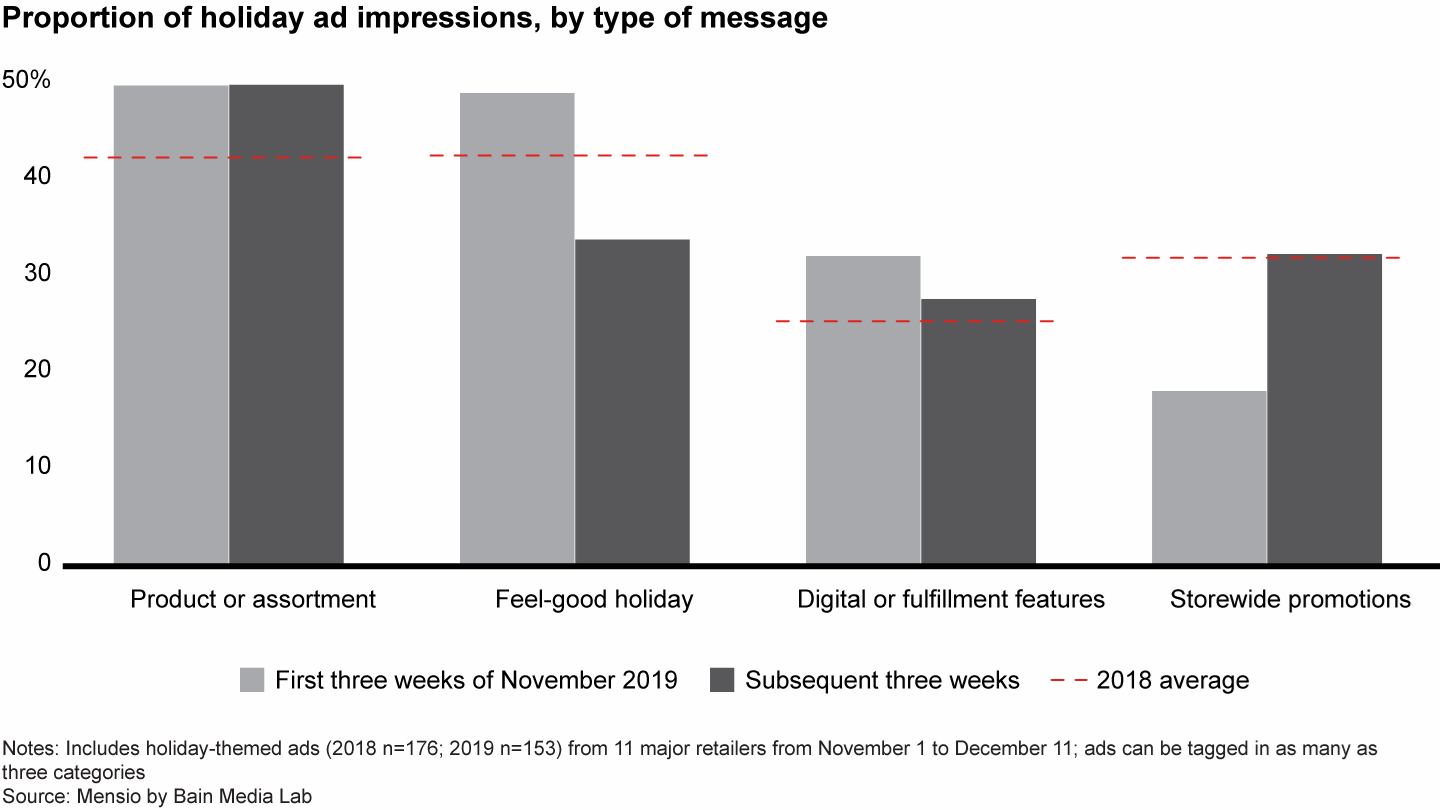
Making the holidays experiential
Looking beyond media to woo shoppers during the holidays is nothing new. Macy’s famously has been featuring an in-store Santa Claus since 1862. This season, retailers small and large are using a combination of tried-and-true techniques and novel digital technologies to cultivate exclusive and interactive experiences that attract shoppers.
- Augmented reality. In partnership with Snapchat, Kohl’s launched an augmented reality (AR) window-shopping experience in November, permitting customers to explore a virtual version of a holiday pop-up without being physically present. Customers could explore featured products and follow links from the AR space to make purchases on the Kohl’s website. Kohl’s isn’t the only retailer testing AR this season. Anticipating a slew of holiday proposals, J.C. Penney teamed up with Verizon Media to implement AR-enabled ads for the retailer’s Modern Bride collection. By clicking on an ad, shoppers can use an AR feature on their phones to virtually try on engagement rings.
- Livestreaming. Retailers have found creative ways to extend experiential shopping online, too. For Singles Day in China this year, online shopping goliaths Alibaba and JD.com livestreamed interactive entertainment events to engage customers before the shopping festival started. The Alibaba kickoff gala had significant viewership, with more than 50 million people tuning in to a livestreamed performance by Taylor Swift.
- In-store events. As in prior years, retailers are hosting exclusive in-store events to boost holiday foot traffic in physical stores. For example, Saks Fifth Avenue is partnering with Disney to offer an immersive “Frozen 2 Enchanted Forest Experience” at its flagship store in New York.
- Pop-up shops. Retailers are also continuing to evolve the pop-up shop concept. For example, Amazon and women’s lifestyle site Refinery29 launched a holiday pop-up stocked with home goods and apparel items chosen by leading bloggers and influencers. The early-December launch party featured appearances by Katie Holmes and Karlie Kloss.
Unwrap effective marketing measurement for the new year
With retailers spending billions on marketing, the holidays provide an unmatched opportunity to learn from different approaches. Retailers that measure their marketing efforts and use the results to inform business decisions can uncover a powerful competitive advantage.
Yet while plenty of companies measure marketing activities, all too often, those measurements aren’t shared broadly among teams, and neither inform important strategic decisions nor lead to useful actions. These retailers can’t effectively convert insights into actions and, as a result, end up with disjointed marketing strategies or investments in the wrong audiences or metrics.
Marketing leaders make measurement the centerpiece of their growth strategy—and it pays off. In partnership with Google, Bain surveyed more than 600 companies and found that companies with the most mature measurement capabilities are four times more likely than the least mature to exceed their business goals, grow revenue and gain market share.
To raise their game in the discipline of measurement, organizations devote substantial time and effort to excelling in three areas: measuring the entire customer journey, using automation at each touchpoint and breaking down walls between teams. They test and learn as they go, varying their inputs to generate insights from each effort.
For example, luxury retailer Shinola’s commitment to measurement has led to a 31% increase in performance revenue—that is, sales linked to traceable media spending—over the past year, while maintaining profitability. It measures return on ad spending across its entire omnichannel operation, not just in store or online. It also uses automation to connect with shoppers at early touchpoints and sequence messaging across the entire customer journey, while continuously testing and learning to improve future campaigns.
Gaining a measurement advantage is a difficult path, but retailers can start by understanding where they fall on the measurement maturity curve. Once they’ve mastered measurement, they’ll be well equipped to continue on the journey to marketing leadership for holidays to come.

Bain Media Lab
Bain has teamed with AI pioneer Hive to develop and launch a co-branded product suite in the TV analytics space—bringing an unprecedented level of insight, measurement, and attribution to the TV advertising space.
The post-holiday recap and outlook
We hope that you enjoy wonderful holiday celebrations. We’ll be back in the new year with our final issue of the season, “Bain’s Post-Holiday Recap and Outlook.”
Appendix
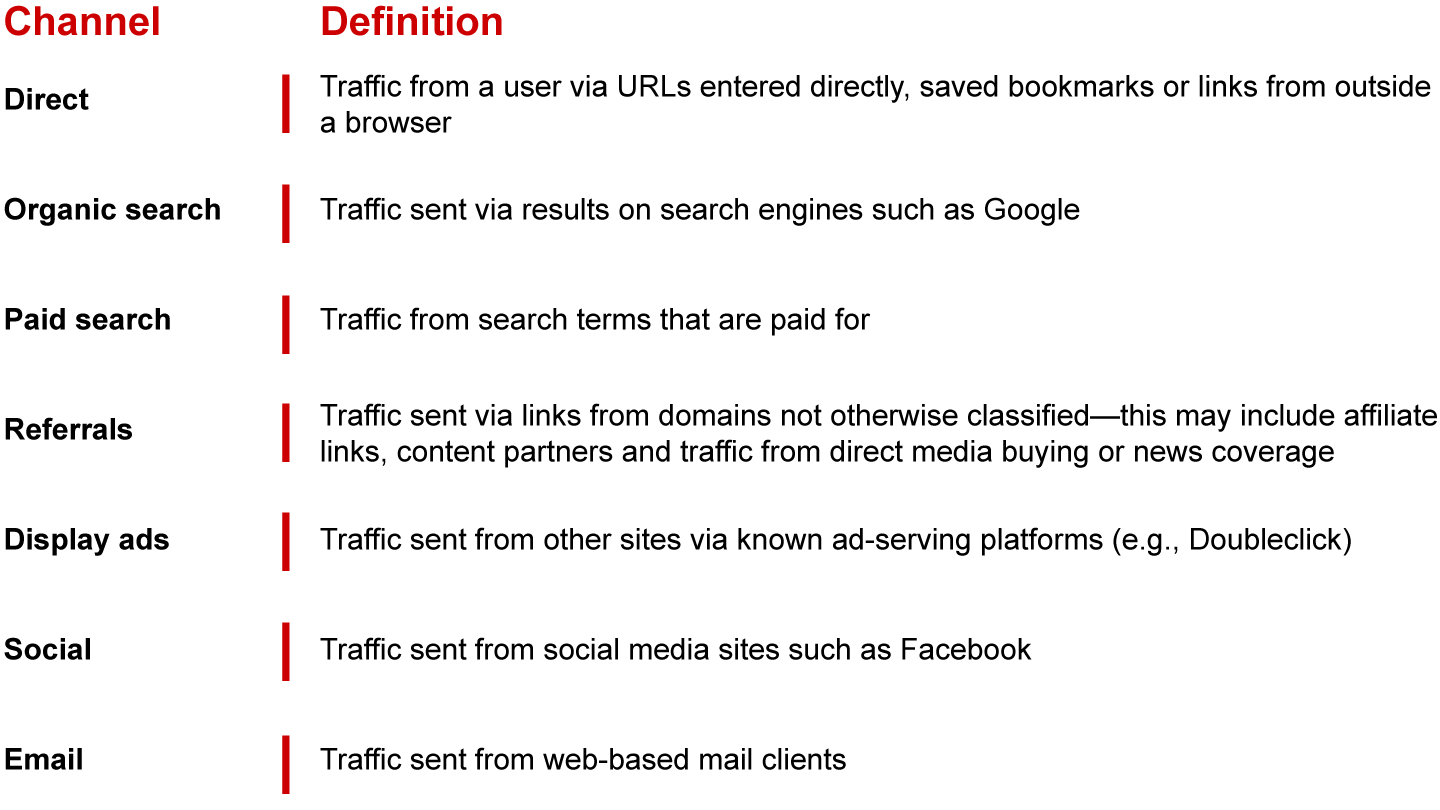
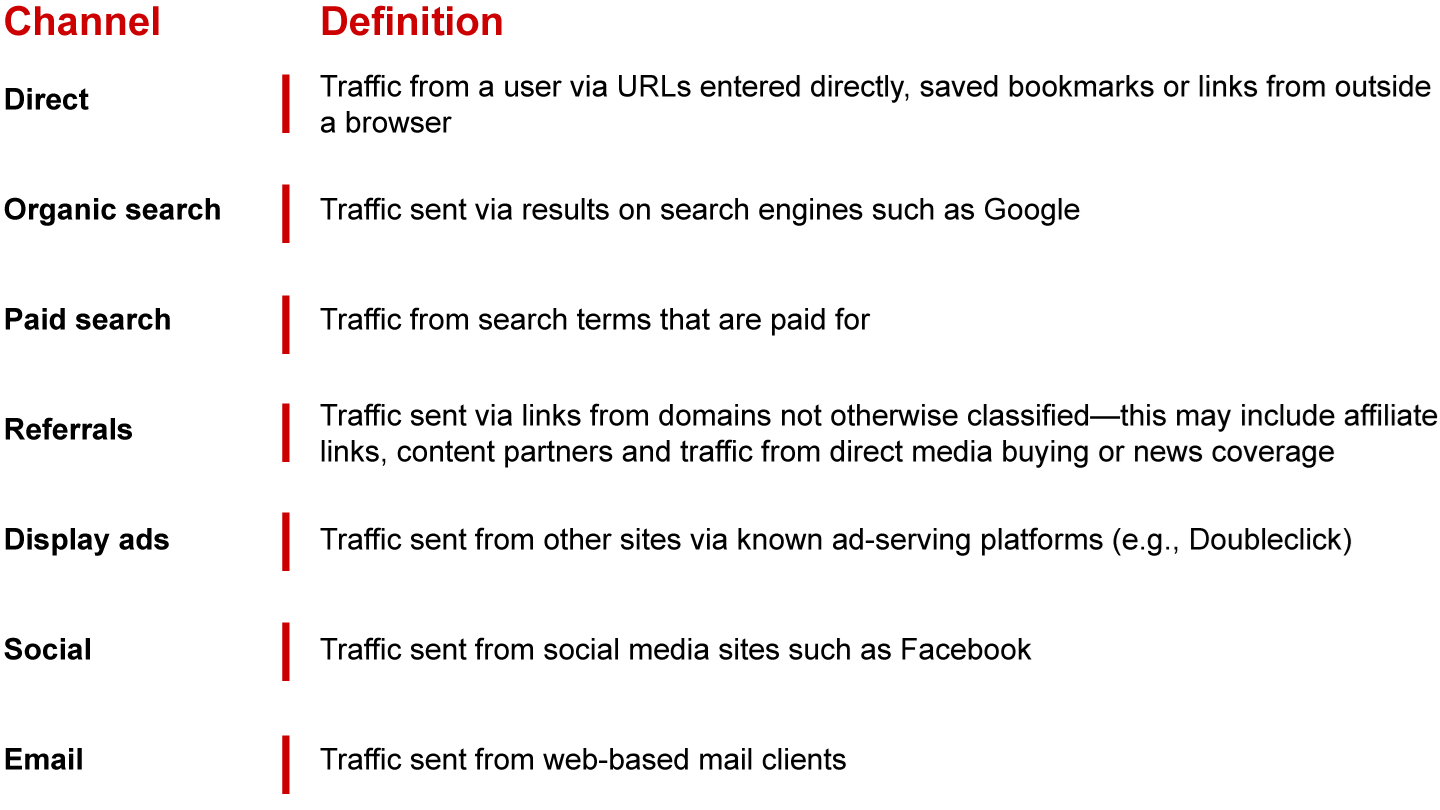
About our research partners
Jumpshot provides insights about online user actions that help e-commerce companies and brands gauge how and where customers are clicking and buying. The company’s real-time, anonymized global panel tracks 5 billion actions a day across 100 million devices. Jumpshot’s clients include major companies in industries such as consumer products, media, technology and healthcare. To learn more about Jumpshot, visit www.jumpshot.com.
Kantar is a world-leading data, insights and consulting company. Combining expertise in human understanding with advanced technologies, Kantar’s 30,000 people help leading organizations succeed and grow. To learn more, visit www.kantar.com.
Mensio is a marketing analytics platform developed in partnership between Bain Media Lab and AI pioneer Hive. Mensio provides brands, agencies and network owners with "digital-like" intelligence and measurement of advertising and sponsorships, with an initial focus on TV. The platform links content metadata generated by Hive’s proprietary computer-vision models with household-level viewership from more than 20 million US TV households and the ability to match to a diverse set of business outcomes at a household level. To learn more about Mensio, see www.bain.com/bain-media-lab. To learn more about Hive, see thehive.ai.
Pathmatics is a digital market intelligence firm that turns the world’s marketing data into actionable insights. Pathmatics Explorer, the marketing intelligence platform, provides visibility into the digital ad performance of brands, their competitors, and entire industries across display, social, video, mobile, and native advertising data. Brands and agencies get access to the creative used by all advertisers, spend and impression data, and path from publisher to viewer, empowering them to minimize waste from their budgets, better position their marketing, and predict the next moves of their competitors. For more information, visit www.pathmatics.com.
PlaceIQ is a leading data and technology provider that powers critical business and marketing decisions with location data, analytics and insights. With PlaceIQ, companies can uncover opportunities within the consumer journey by learning about and connecting with location-based audiences, measuring real-world ROI and applying insights that drive intelligent marketing and successful business outcomes. For more information, visit www.placeiq.com.
SEMrush is a trusted provider of search volume, correlations, website traffic and digital trends data used around the world. Comprised of over 40 tools and collecting search data for over 140 countries, SEMrush provides statistics that can enhance any data-driven piece with more up-to-date information and accurate data. For more information, visit www.semrush.com.
SimilarWeb provides granular insights about websites and apps across all industries and in every region to help brands make better decisions. Companies use SimilarWeb to understand industry dynamics, reveal competitor strategies, benchmark performance and identify new opportunities. To learn more, visit www.similarweb.com.
Suzanne Tager is a senior director with Bain & Company’s Global Retail practice and is based in the firm’s New York office. Darrell Rigby leads Bain’s Global Innovation practice and is based in the Boston office. Aaron Cheris leads the firm’s Retail practice in the Americas and is based in San Francisco.
The authors would like to acknowledge the contributions of John Grudnowski, Dan Calpin, Shweta Bhardwaj, Sara Magenheimer, Muhammad Eltahir, Mark Heneine, Amanda Sload and Daniel Topler-Garcia.
-
Selected references
Bain & Company has included in this document information and analyses based on the sources referenced below as well as our own research and experience. Bain has not independently verified this information and makes no representation or warranty, express or implied, that such information is accurate or complete. Projected market and financial information, analyses and conclusions contained here are based (unless sourced otherwise) on the information described above, and Bain’s judgments should not be construed as definitive forecasts or guarantees of future performance or results. Neither Bain & Company nor any of its subsidiaries or their respective officers, directors, shareholders, employees or agents accept any responsibility or liability with respect to this document.
“2019 Holiday Shopping Trends.” Adobe, website, accessed December 3, 2019.
Abramovich, Giselle. “Retailers Are Going Experiential for 2019 Holiday Shoppers.” CMO by Adobe, November 2019.
“Adobe Holiday Shopping Trends: Adobe Digital Insights 2019.” Adobe, October 2019.
Cohen, Patricia. “U.S. Added 266,000 Jobs in November. Here's the Bottom Line.” The New York Times, December 6, 2019.
Hanson, Keri. “The History of Macy's: From Humble Beginnings to Stunning Success.” Macy's, June 12, 2017.
Hartjen, Ray. “Brick-and-Mortar Stores Enjoy Strong Start to Holiday Shopping Season.” RetailNext, December 2, 2019.
Howland, Daphne. “Amazon Turns to Refinery29, Celebs for Holiday Attention.” Retail Dive, December 9, 2019.
Hutchinson, Andrew. “TikTok Continues to Lead Social App Download Rankings in September.” Social Media Today, October 24, 2019.
Kelso, Alex. “Infographic: Alibaba’s 2019 Singles’ Day.” China Skinny, November, 12, 2019.
“Kohl's Holiday Season Shopping Experiences with Augmented Reality.” Immersive Technology, November 21, 2019.
Koltun, Natalie. “JC Penney Rings in Holiday Proposal Season with AR Ad Driving Virtual Try-Ons.” Retail Dive, November 22, 2019.
Koziol, Nick. “As Retail Traffic Continues to Fall, Expect Store Closures to Continue.” Stansberry Research, December 4, 2019.
Lukovitz, Karlene. “EOS Taps TikTok Creators for the Holidays ... Plus, Some TikTok Tips.” MediaPost, November 26, 2019.
Matthews, Chris, et al. “Stocks Close at Fresh Records on Trade Deal Optimism.” MarketWatch, December 12, 2019.
Peterson, Hayley. “Black Friday as We Know It Is Dying, but That's Not All Bad News for Retailers.” Business Insider, December 2, 2019.
“Saks Fifth Avenue: Disney’s Frozen 2 Enchanted Experience at Saks.” Saks Fifth Avenue, website, accessed December 16, 2019.
Sharma, Amit. “Retailers Should Look to Singles Day as the Future of Holiday Shopping.” Women’s Wear Daily, November 26, 2019.
Stambor, Zak. “Retailers Expect to Increase Ad Spending This Holiday Season.” Digital Commerce 360, November 14, 2019.
“Thanksgiving Weekend Multichannel Shopping up Almost 40 Percent over Last Year.” National Retail Federation, press release, November 27, 2018.
University of Michigan. “Surveys of Consumers: Preliminary Results for December 2019.” Data release, December 6, 2019.
US Bureau of Labor Statistics. “Employment Situation Summary.” News release, December 6, 2019.
Wilson, Marianne. “NRF: Shopping Traffic—Online and Store—Up 14% over Holiday Weekend.” Chain Store Age, December 3, 2019.